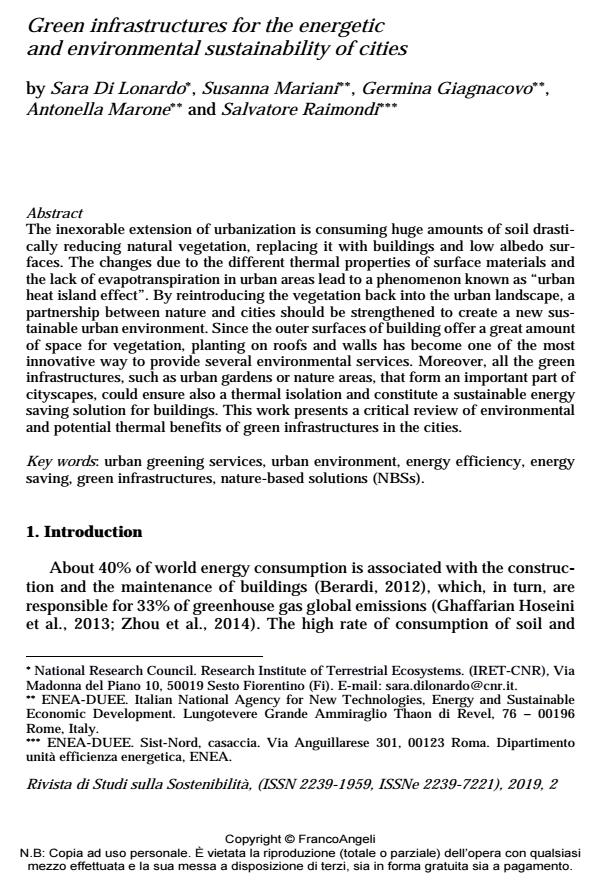Green infrastructures for the energetic and environmental sustainability of cities
Titolo Rivista RIVISTA DI STUDI SULLA SOSTENIBILITA'
Autori/Curatori Sara Di Lonardo, Susanna Mariani, Germina Giagnacovo, Antonella Marone, Salvatore Raimondi
Anno di pubblicazione 2020 Fascicolo 2019/2 Suppl.
Lingua Inglese Numero pagine 20 P. 79-98 Dimensione file 112 KB
DOI 10.3280/RISS2019-002-S1006
Il DOI è il codice a barre della proprietà intellettuale: per saperne di più
clicca qui
Qui sotto puoi vedere in anteprima la prima pagina di questo articolo.
Se questo articolo ti interessa, lo puoi acquistare (e scaricare in formato pdf) seguendo le facili indicazioni per acquistare il download credit. Acquista Download Credits per scaricare questo Articolo in formato PDF

FrancoAngeli è membro della Publishers International Linking Association, Inc (PILA)associazione indipendente e non profit per facilitare (attraverso i servizi tecnologici implementati da CrossRef.org) l’accesso degli studiosi ai contenuti digitali nelle pubblicazioni professionali e scientifiche
The inexorable extension of urbanization is consuming huge amounts of soil drastically reducing natural vegetation, replacing it with buildings and low albedo surfaces. The changes due to the different thermal properties of surface materials and the lack of evapotranspiration in urban areas lead to a phenomenon known as "urban heat island effect". By reintroducing the vegetation back into the urban landscape, a partnership between nature and cities should be strengthened to create a new sustainable urban environment. Since the outer surfaces of building offer a great amount of space for vegetation, planting on roofs and walls has become one of the most innovative way to provide several environmental services. Moreover, all the green infrastructures, such as urban gardens or nature areas, that form an important part of cityscapes, could ensure also a thermal isolation and constitute a sustainable energy saving solution for buildings. This work presents a critical review of environmental and potential thermal benefits of green infrastructures in the cities.
Parole chiave:Urban greening services, urban environment, energy efficiency, energy saving, green infrastructures, nature-based solutions (NBSs).
- Abilities and limitations in counteracting urban heat islands Michał Musiał, Anna Pomykała, Lech Lichołai, in Budownictwo i Architektura /2025 pp.111
DOI: 10.35784/bud-arch.7195
Sara Di Lonardo, Susanna Mariani, Germina Giagnacovo, Antonella Marone, Salvatore Raimondi, Green infrastructures for the energetic and environmental sustainability of cities in "RIVISTA DI STUDI SULLA SOSTENIBILITA'" 2 Suppl./2019, pp 79-98, DOI: 10.3280/RISS2019-002-S1006